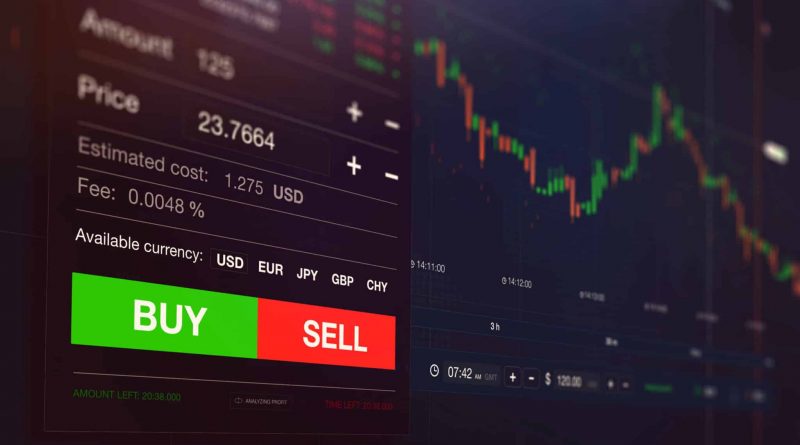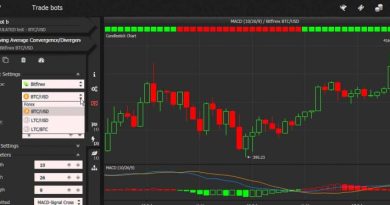8 Steps to Being a Successful Forex Trader
By definition being a successful Forex trader, it means being a trader who makes more winning trades than losing ones and more importantly, profits than losses.
I found out that the many traders who leave the Forex market forever after getting burnt badly in the first few weeks of their short-lived trading careers have something in common – they fail to follow a disciplined and step-by-step approach to getting started on the Forex trading path. Most traders – even seasoned ones from other markets – are so eager to get started that they just start trading live without following a proper plan.
That – in my opinion – is pure suicide. They are better off donating the money to charity. Trading is not gambling. To become a profitable Forex trader, it is necessary to follow a plan. I have detailed 8 steps I religiously followed when I first embarked on the Forex path, all of which had served me well. I am sharing them with you now and hope you will find them useful.
Step 1 – Forex 101
Before you begin doing anything, make sure you learn all that you can about the basics of Forex. Understand what Forex is, how it works, how to calculate profit and loss in Forex, what the most popular currency pairs are, etc.
Step 2 – Trading 101
If you are new to trading anything, arm yourself with at least some basic knowledge of trading. Understand as much as possible about terms such as chart reading, price actions, market trends, breakouts, technical indicators, candlesticks, etc.
Now, it is important to highlight that right after this, many new traders feel adequate to take on the market already. What happens next is an ugly sight as they become hundreds or even thousands of dollars poorer in a week and walk away from the Forex market forever disappointed and disillusioned. However dandy, you may feel after picking up some ‘ground-breaking surefire money-making Forex trading strategies’, resist the temptation to start trading right away.
Instead, continue with Step 3 below.
Step 3 – Research for a Good Broker
Getting a credible broker is essential to trading Forex because you need their services to place your trades with the market. However, many fly-by-night operations are masquerading as legitimate Forex brokers just waiting to gobble your hard-earned money. So before you sign up eagerly for an account and transfer any cash, be sure to conduct ample research on the broker.
Google the name of the broker with the word ‘scam’ behind it and see if anything negative turns up. You will be shocked to hear of horror stories where seemingly well-presented online brokerage sites perform exceedingly well at convincing people to deposit funds with them, but make tons of excuses when it’s time to disburse the funds. Plenty of people get cheated by such operations every year, so be sure to sign up only with the most credible brokers.
And while you are at it, look for a broker that allows you to sign up for a mock trading account. You will find out why in Step 4.
Step 4 – Set Up a Mock Account
As discussed in Step 3, you should look for brokers who allow you to set up a mock trading account. This essentially allows you to trade with virtual money so that you can decide if you like their trading platforms without actually trading with real cash.
Another obvious advantage of the mock account is that you can start honing your trading skills without consequence. Most such mock accounts give you a sum of virtual money for you to begin mock trading and put what you have learned to practice.
Step 5 – Begin Mock Trading
Now, you can start trading with virtual money while you learn the nitty gritty of Forex trading! Now I would recommend that you trade on a demo account for at least 3 to 6 months before you start using real money. Jumping ahead doesn’t do you any good except wipe out your account.
I must remind you to treat your mock account with respect and trade it like you would trade a real account with real money. Only if you harbor a sincere attitude towards mock trading would this do you any good when you start trading with real money.
While you mock trade, this is the time to learn all you can about Forex trading strategies and train your eye. Look at Step 6.
Step 6 – Learn, Learn and Learn
It is highly recommended that you pick up some books or e-courses on Forex trading instead of trying to figure everything out yourself. Learning from a good mentor and applying the techniques you are learning to practice is the only way to become a successful Forex trader.
Step 7 – Plan Your Finances Wisely
Surprisingly, many traders tend to skip this step altogether. Remember, trading is not gambling. You need to plan your finances wisely and determine how much you can risk on each trade. Every individual has a different risk tolerance level depending on his financial status and personality. But as a thumb of rule, I would not recommend risking more than 2-5% of your total trading account per trade. This means to say that if you have $10,000 in trading capital, you should not risk more than $200 to $500 per trade.
Step 8 – Begin Live Trading
After you have learned what you can from the books and courses and mock traded for 3 to 6 months – and if and only if you have been making more winning trades than losing ones – you can begin live trading.
You have come a long way and should be feeling confident about your trading skills. However, you might find that you are not as confident as when you are mock trading. You might be losing more than you did previously. This is normal because you are now trading with a real account and the fear of losing and greed for winning is stronger than before. If you can overcome these psychological barriers you will soon regain confidence in your trading.
Also, do not get into the habit of trading just because you feel the urge to trade. The market will always be there for you to trade, but you might not always be in the right frame of mind to trade. If you are in a bad mood, don’t trade. If you can’t think properly, don’t trade. If you are tired, don’t trade. If there is no signal for trading, don’t trade. The bottom line is, don’t trade for the sake of trading.




